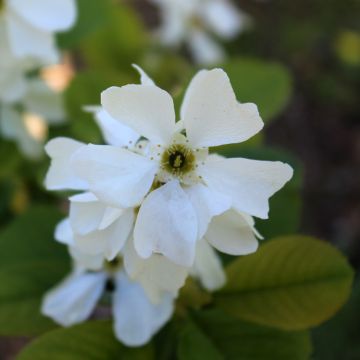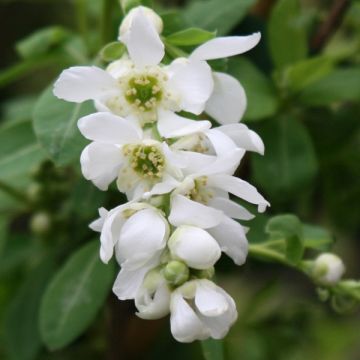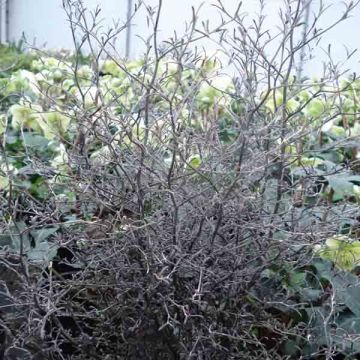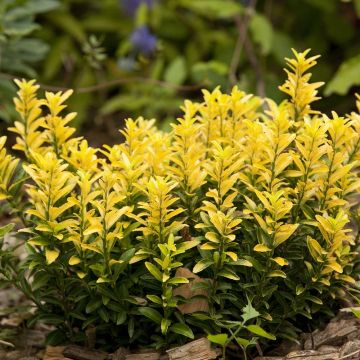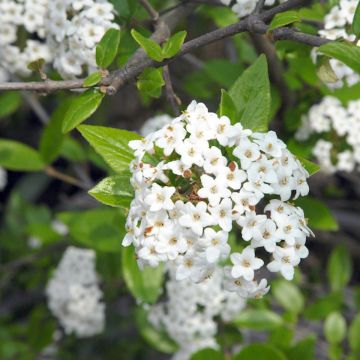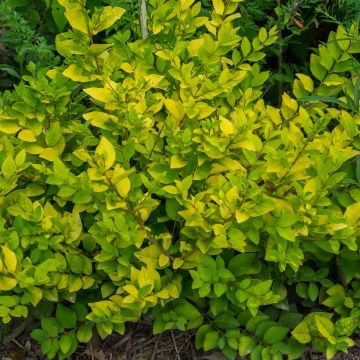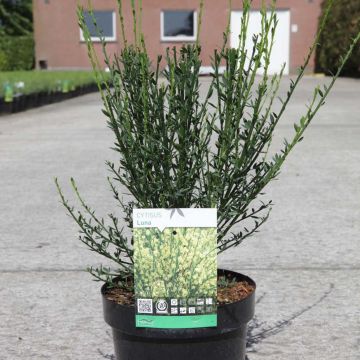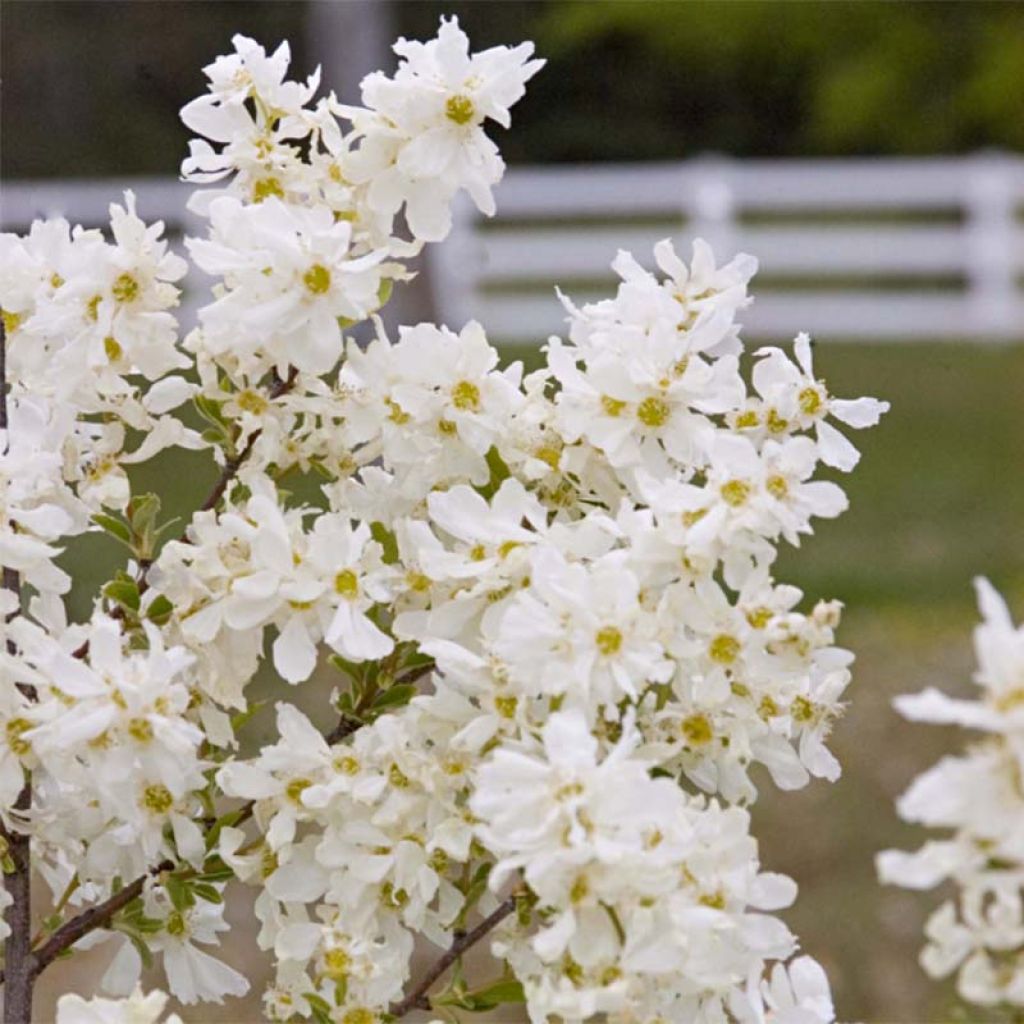

Exochorda macrantha Lotus Moon
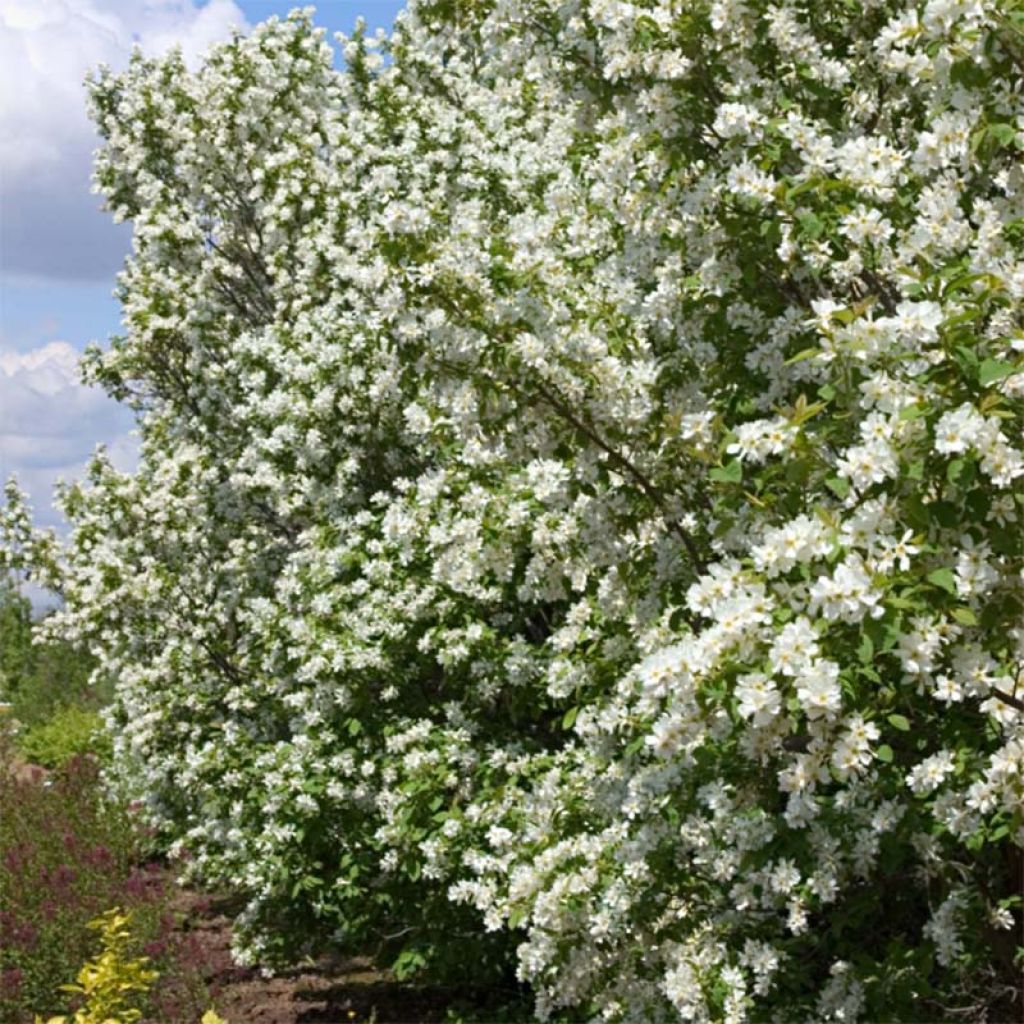

Exochorda macrantha Lotus Moon
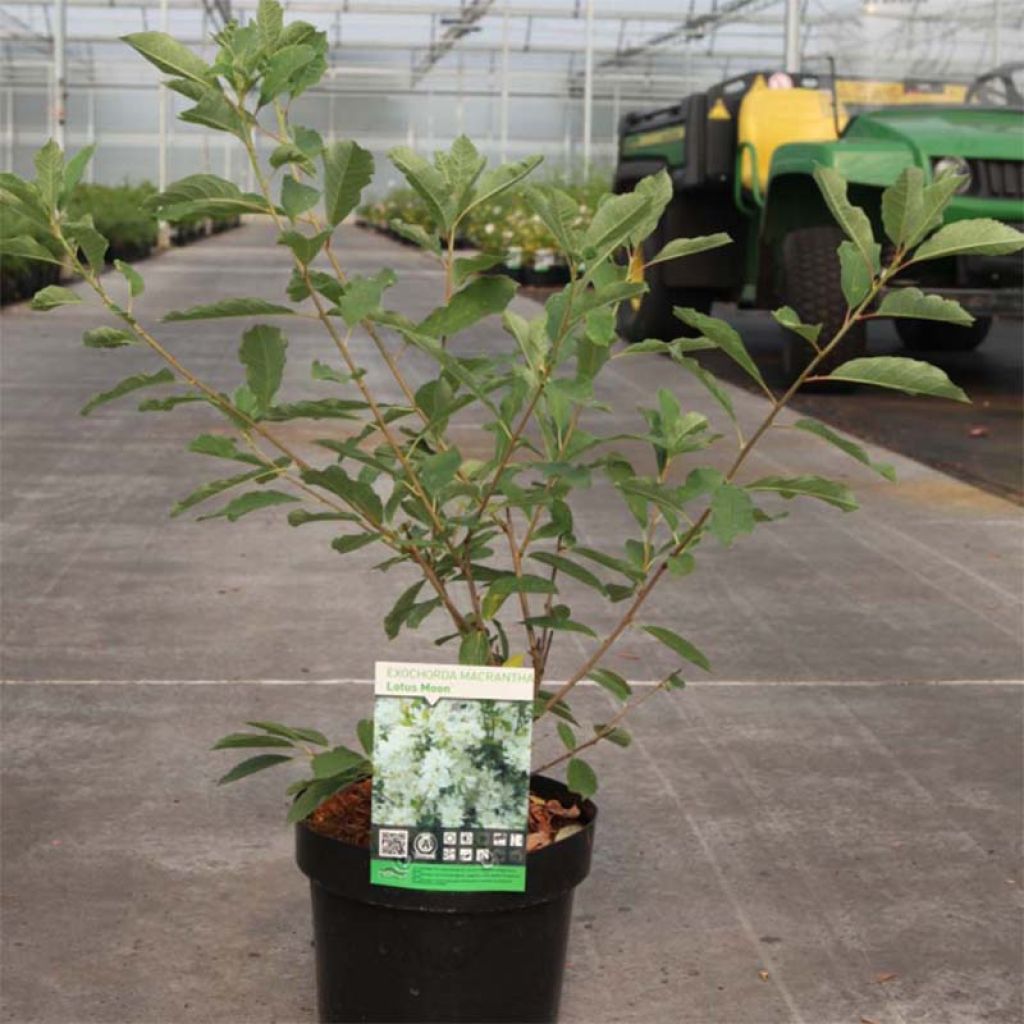

Exochorda macrantha Lotus Moon
Exochorda macrantha Lotus Moon
Exochorda x macrantha Lotus Moon® 'Bailmoon'
Pearlbush, Common Pearlbush
This item cannot be shipped to the selected country
Delivery charge from €5.90
More information
Schedule delivery date,
and select date in basket
This plant carries a 24 months recovery warranty
More information
We guarantee the quality of our plants for a full growing cycle, and will replace at our expense any plant that fails to recover under normal climatic and planting conditions.
From €5.90 for pickup delivery and €6.90 for home delivery
Express home delivery from €8.90.
Does this plant fit my garden?
Set up your Plantfit profile →
Description
The Exochorda Lotus Moon is a new variety of Exochorda, a deciduous bush that stands out for its rounded habit and small size. This hybrid is also and above all notable for its exceptional spring flowering, which covers up to 90% of the plant in April-May. The plant disappears under a snowy mantle composed of thousands of round buds resembling pearls, which open into small white flowers. It is also a sturdy plant, low-maintenance and requiring very little care. Perfect as a standalone plant, but also in the background of a flowerbed or placed in a large pot on the terrace.
The Exochorda 'Lotus Moon' is a horticultural hybrid introduced in 2014, derived from Exochorda x macrantha, itself the result of cross-breeding between Exochorda racemosa (originating from China) and Exochorda korolkowii (originating from Turkestan). It is a very compact bush, not exceeding 1.50m (4 ft 11 in) in height at maturity and 1m20 in width, which presents a harmoniously rounded habit. During the months of April and May, its young branches are covered in a string of perfectly round, pearly white floral buds, which have earned it the nickname "pearl tree". These buds, assembled in clusters of 6 to 10, open into single flowers with 5 petals, measuring 3-4 cm (1.2-1.6 in) in diameter, white in colour with a pale yellow heart. Its deciduous leaves, light to medium green in colour, measure from 4 to 6 cm (1.6 to 2.4 in) in length and are oval in shape, elongated, and pointed at their tips. The foliage turns a golden yellow colour in autumn. This extremely hardy bush shows moderate growth.
This bush called the pearl tree is well suited for use as a free-standing hedge, as well as in flowerbeds. Low-growing bushes such as Syringa microphylla superba, Abeliophyllum distichum roseum, Chaenomeles speciosa 'Falconnet Charlet', Coronilla glauca citrina, and Ceanothus Skylark can be planted alongside the main plant to enhance the spring flowering season. It can also be used in a pot with a diameter of at least 50 cm (19.7 in). To enhance the beauty of your garden, you can plant perennial plants and bulbs that bloom simultaneously at the base of your shrubs. You can opt for plants like Geranium vivace Rozanne, wall bellflowers, bergenia, early tulips, ipheions, or chionodoxas. Alternatively, you can plant it in front of a dark-foliaged hedge, conifers, or boxwood to make it stand out.
Report an error about the product description
Exochorda macrantha Lotus Moon in pictures
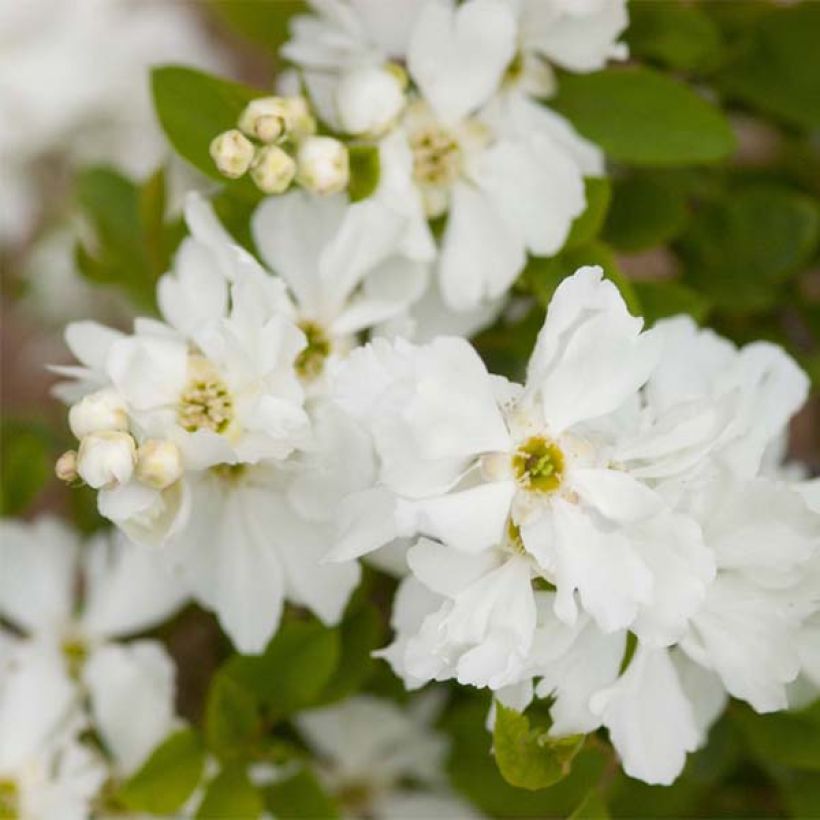

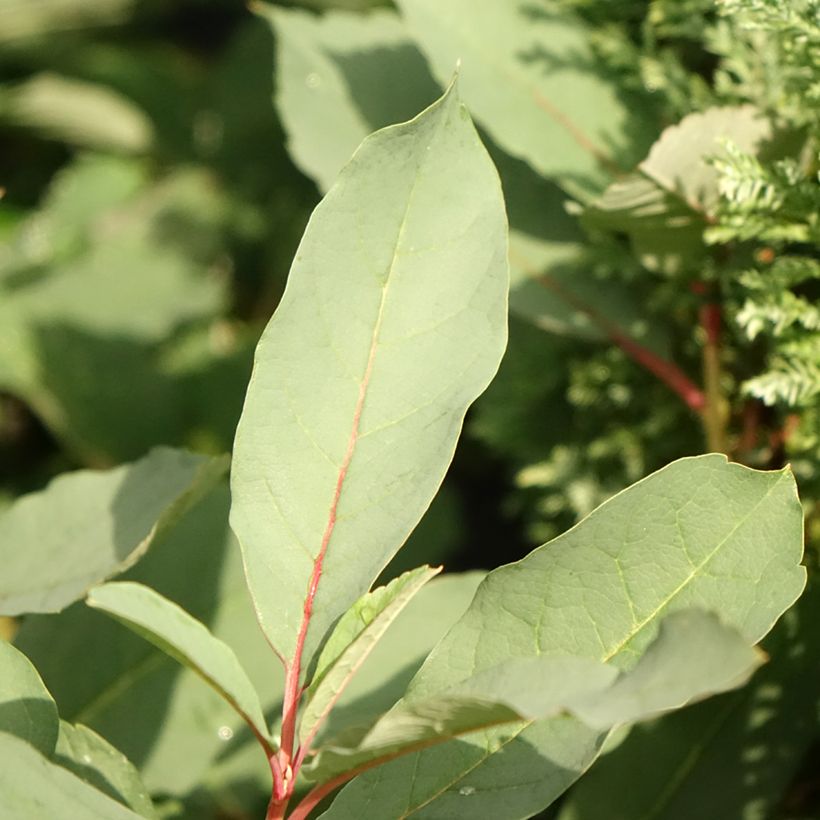

Plant habit
Flowering
Foliage
Botanical data
Exochorda
x macrantha
Lotus Moon® 'Bailmoon'
Rosaceae
Pearlbush, Common Pearlbush
Cultivar or hybrid
Other Exochorda
Planting and care
If you want to grow the 'Lotus Moon' Exochorda bush, choose a spot with full sun, but not too much. If that's not possible, a partially shaded area will do. The soil should be moist, well-drained, and fertile. Once the bush is established, it won't need much watering. Use any good garden soil, and plant it deeply in autumn to enjoy its flowering in April and May. After flowering, trim the bush lightly to remove faded branches and to keep the vegetation even. To encourage the growth of new branches and prevent the bush from becoming bare at the base, cut back the oldest branches (over 3 years) by a third. You should perform this trimming every 2-3 years. Make sure the centre of the bush has good airflow.
Planting period
Intended location
Care
This item has not been reviewed yet - be the first to leave a review about it.
Hedge shrubs
Haven't found what you were looking for?
Hardiness is the lowest winter temperature a plant can endure without suffering serious damage or even dying. However, hardiness is affected by location (a sheltered area, such as a patio), protection (winter cover) and soil type (hardiness is improved by well-drained soil).

Photo Sharing Terms & Conditions
In order to encourage gardeners to interact and share their experiences, Promesse de fleurs offers various media enabling content to be uploaded onto its Site - in particular via the ‘Photo sharing’ module.
The User agrees to refrain from:
- Posting any content that is illegal, prejudicial, insulting, racist, inciteful to hatred, revisionist, contrary to public decency, that infringes on privacy or on the privacy rights of third parties, in particular the publicity rights of persons and goods, intellectual property rights, or the right to privacy.
- Submitting content on behalf of a third party;
- Impersonate the identity of a third party and/or publish any personal information about a third party;
In general, the User undertakes to refrain from any unethical behaviour.
All Content (in particular text, comments, files, images, photos, videos, creative works, etc.), which may be subject to property or intellectual property rights, image or other private rights, shall remain the property of the User, subject to the limited rights granted by the terms of the licence granted by Promesse de fleurs as stated below. Users are at liberty to publish or not to publish such Content on the Site, notably via the ‘Photo Sharing’ facility, and accept that this Content shall be made public and freely accessible, notably on the Internet.
Users further acknowledge, undertake to have ,and guarantee that they hold all necessary rights and permissions to publish such material on the Site, in particular with regard to the legislation in force pertaining to any privacy, property, intellectual property, image, or contractual rights, or rights of any other nature. By publishing such Content on the Site, Users acknowledge accepting full liability as publishers of the Content within the meaning of the law, and grant Promesse de fleurs, free of charge, an inclusive, worldwide licence for the said Content for the entire duration of its publication, including all reproduction, representation, up/downloading, displaying, performing, transmission, and storage rights.
Users also grant permission for their name to be linked to the Content and accept that this link may not always be made available.
By engaging in posting material, Users consent to their Content becoming automatically accessible on the Internet, in particular on other sites and/or blogs and/or web pages of the Promesse de fleurs site, including in particular social pages and the Promesse de fleurs catalogue.
Users may secure the removal of entrusted content free of charge by issuing a simple request via our contact form.
The flowering period indicated on our website applies to countries and regions located in USDA zone 8 (France, the United Kingdom, Ireland, the Netherlands, etc.)
It will vary according to where you live:
- In zones 9 to 10 (Italy, Spain, Greece, etc.), flowering will occur about 2 to 4 weeks earlier.
- In zones 6 to 7 (Germany, Poland, Slovenia, and lower mountainous regions), flowering will be delayed by 2 to 3 weeks.
- In zone 5 (Central Europe, Scandinavia), blooming will be delayed by 3 to 5 weeks.
In temperate climates, pruning of spring-flowering shrubs (forsythia, spireas, etc.) should be done just after flowering.
Pruning of summer-flowering shrubs (Indian Lilac, Perovskia, etc.) can be done in winter or spring.
In cold regions as well as with frost-sensitive plants, avoid pruning too early when severe frosts may still occur.
The planting period indicated on our website applies to countries and regions located in USDA zone 8 (France, United Kingdom, Ireland, Netherlands).
It will vary according to where you live:
- In Mediterranean zones (Marseille, Madrid, Milan, etc.), autumn and winter are the best planting periods.
- In continental zones (Strasbourg, Munich, Vienna, etc.), delay planting by 2 to 3 weeks in spring and bring it forward by 2 to 4 weeks in autumn.
- In mountainous regions (the Alps, Pyrenees, Carpathians, etc.), it is best to plant in late spring (May-June) or late summer (August-September).
The harvesting period indicated on our website applies to countries and regions in USDA zone 8 (France, England, Ireland, the Netherlands).
In colder areas (Scandinavia, Poland, Austria...) fruit and vegetable harvests are likely to be delayed by 3-4 weeks.
In warmer areas (Italy, Spain, Greece, etc.), harvesting will probably take place earlier, depending on weather conditions.
The sowing periods indicated on our website apply to countries and regions within USDA Zone 8 (France, UK, Ireland, Netherlands).
In colder areas (Scandinavia, Poland, Austria...), delay any outdoor sowing by 3-4 weeks, or sow under glass.
In warmer climes (Italy, Spain, Greece, etc.), bring outdoor sowing forward by a few weeks.



































